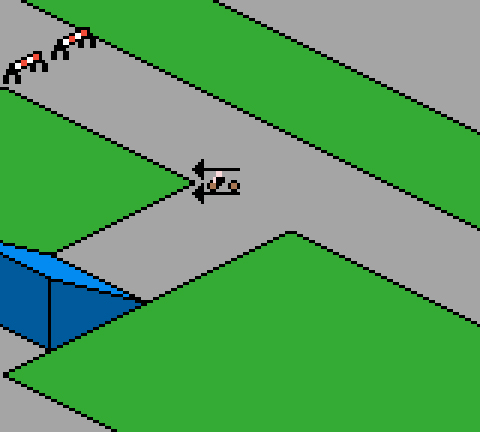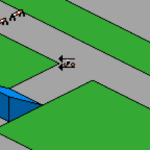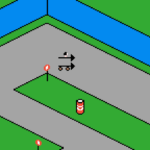2000 DC Studios
Platform: Nintendo Game Boy Color
Our next entry is a very early start of an isometric engine for the Game Boy Color, and for a BMX game that was being created by Charles Doty. The idea was to develop into a sort of R.C. Pro-Am clone with BMX bikes and jumps.

Charles was then asked to turn it into something similar to Skate and Destroy, which ironically was cancelled on the Color Game Boy. Basically, DC Studios were looking to do the conversion of Dave Mirra’s Freestyle BMX on the platform for Acclaim and put in a pitch to get the rights to develop it.
In November 1999, DC Studios produced a complete Game Design Document, which you can find below – where its clear they were looking to do something similar to Skate and Destroy, even referencing screenshots from that game for the art style.
The plan was to cram the entire game into an 8M cartridge and utilize a viewpoint similar to 720 degrees by Atari. The features outlined were as follows:
- Full colour multidirectional scrolling
- Proper visual priorities
- Large Player images with large numbers of animation frames allowing large numbers of moves
- One player game with multiple events.
- Two player game on two linked gameboys or alternate and other competitions on one.
- Password generation system to verify the level a player has achieved.
- Speech and music incorporated including speech and sound samples.
- Huge number of moves and animations – Possible to have at least 2000 animation frames using 48*48 sprite images. Depending on compression more could be done.
- Large number of background areas to play on
- User definable controls including the possibility to design multiple, special moves that could be called up mid event.
- Full level editor allowing the player to set up tracks to play either as one player or against another player on the same gameboy or another by link. Created tracks can be sent across the link to your opponent. NB only saveable if Acclaim wish to use battery backed ram on the cartridge.
The editor in particular sounded pretty cool, giving something perhaps similar to the old Kikstart 2 game on the Commodore 64.
The plans were to deliver the first milestone by the end of December 1999, though based on dates of the builds, it seems that Charles didn’t have that long and what he had produced was just an early proof of concept rather than a Milestone. The aim was to finish and complete by July 2000, but it was never to be.
Unfortunately, when the early demos were shown to the publisher, they didn’t feel that the look and viewpoint was going to be good enough for them, and eventually Acclaim went with another development studio, with the game eventually being released in 2000. It’s a shame, as the demos were only very early and hadn’t yet had any real graphics added at this stage.
So there we have it – check out DC’s original pitch to Acclaim in full with the game design document, and Charles’ initial concepts which would have evolved into the game, had DC Studios been given the contract. A very early glimpse of a completely different route the game could have taken.
With thanks to Mark Greenshields for allowing us to preserve.


